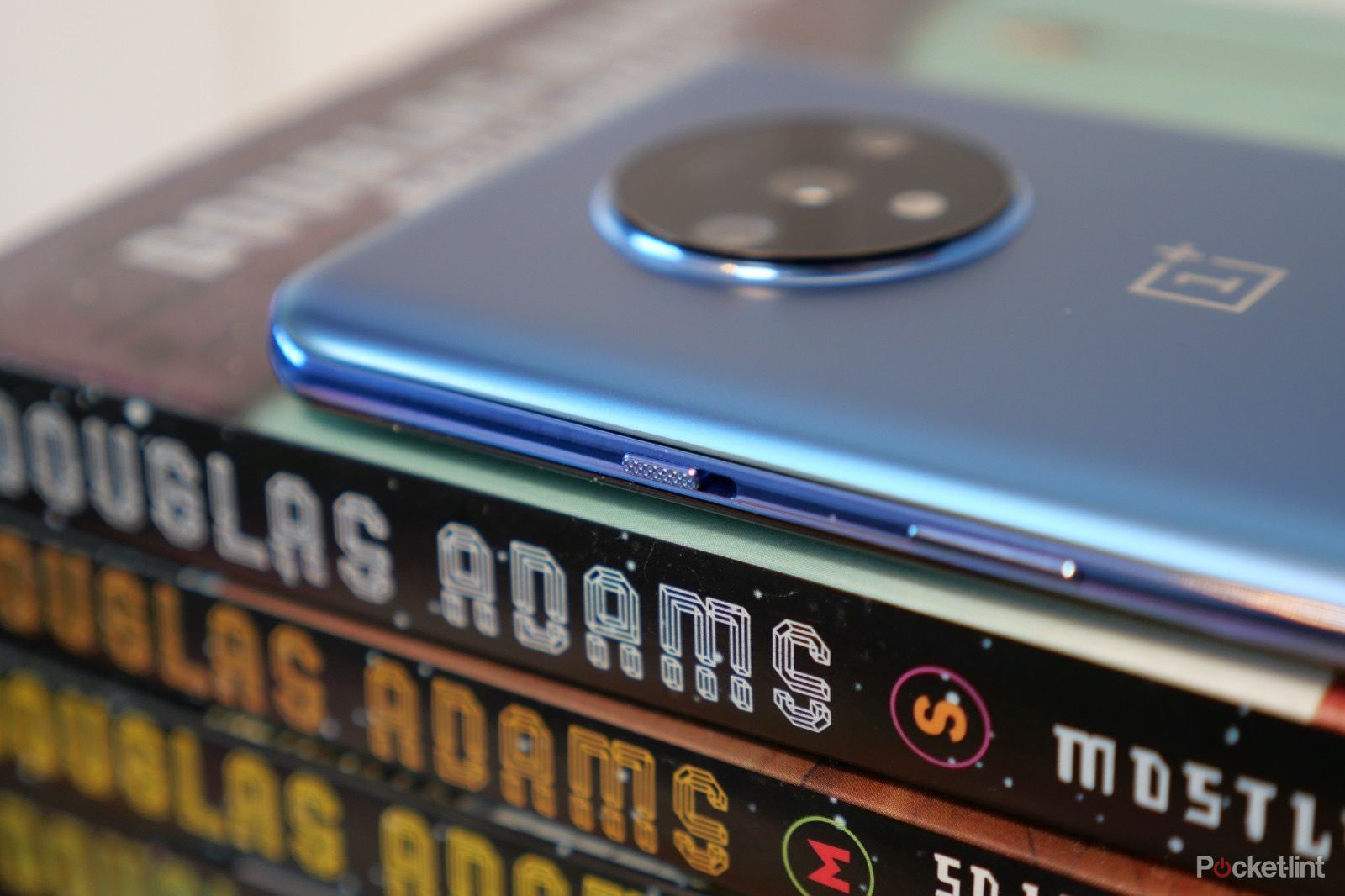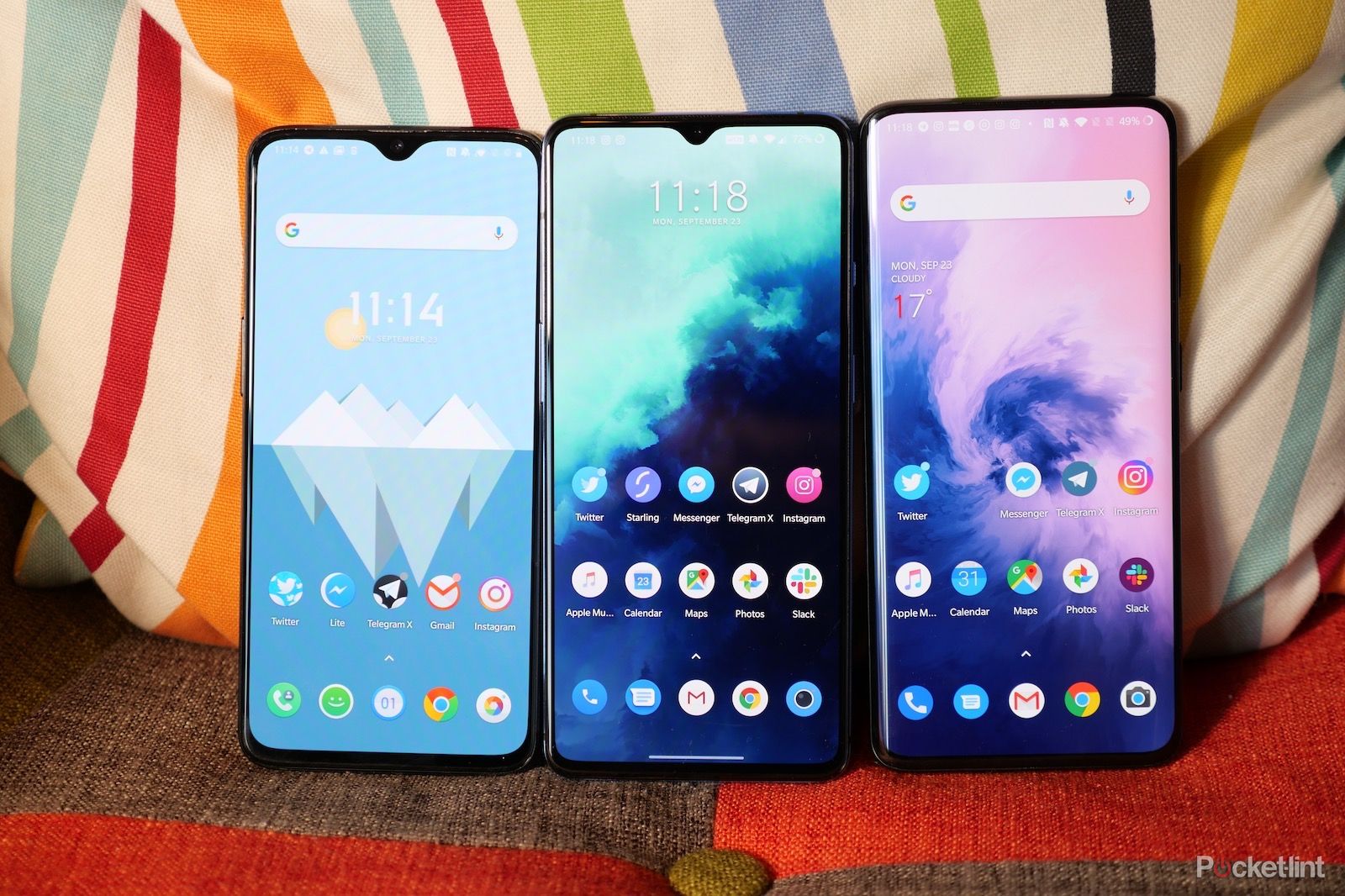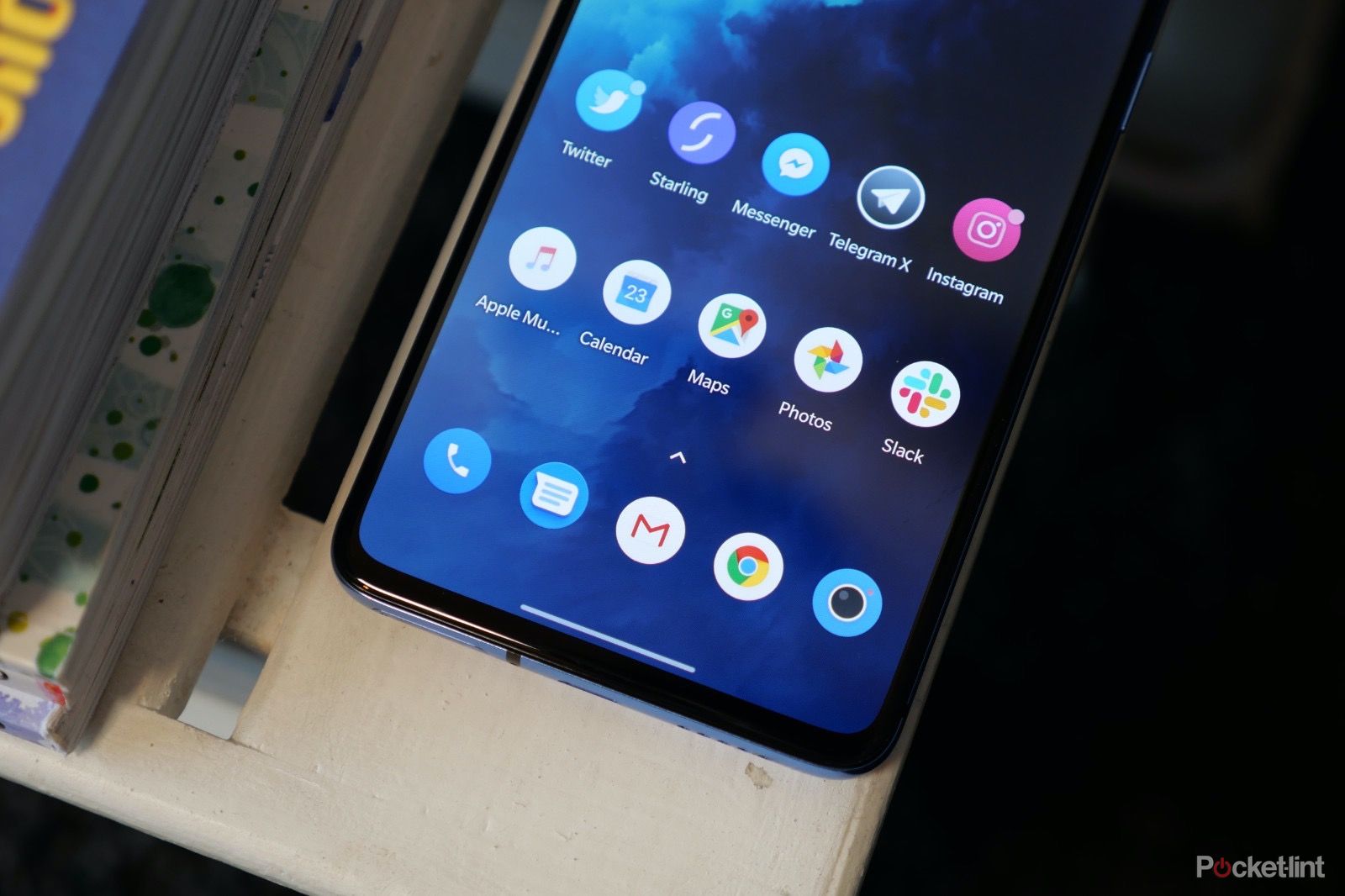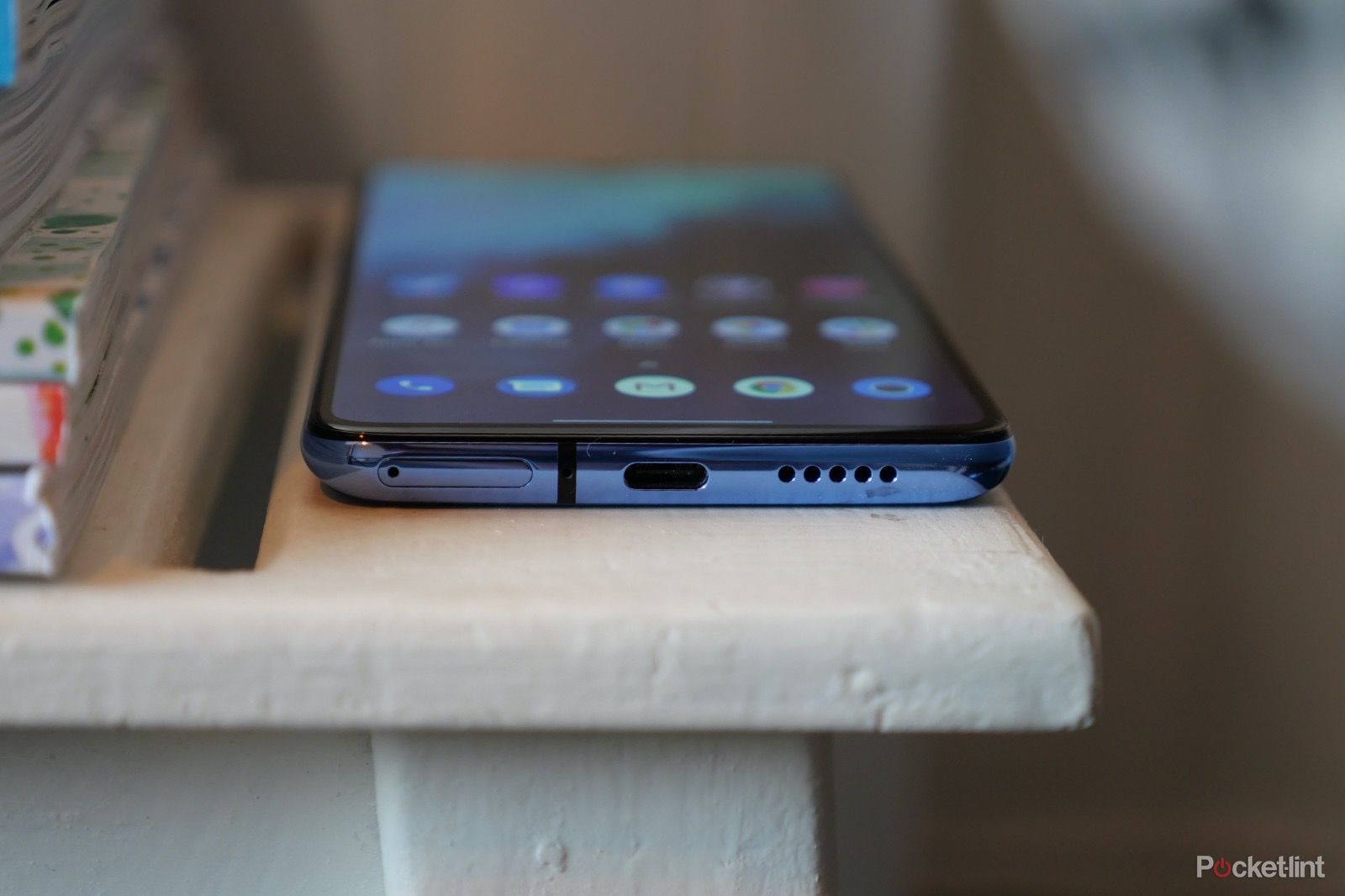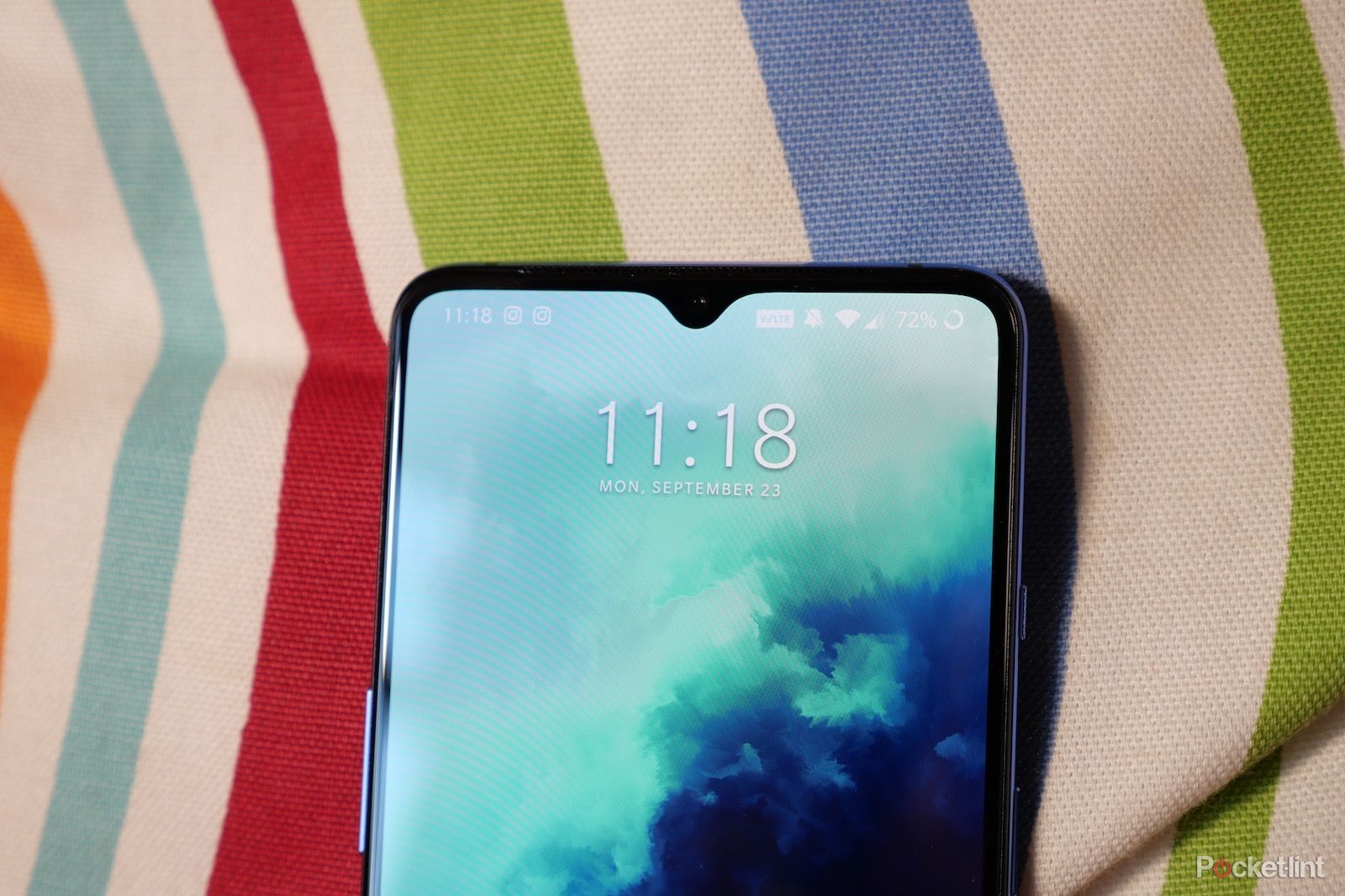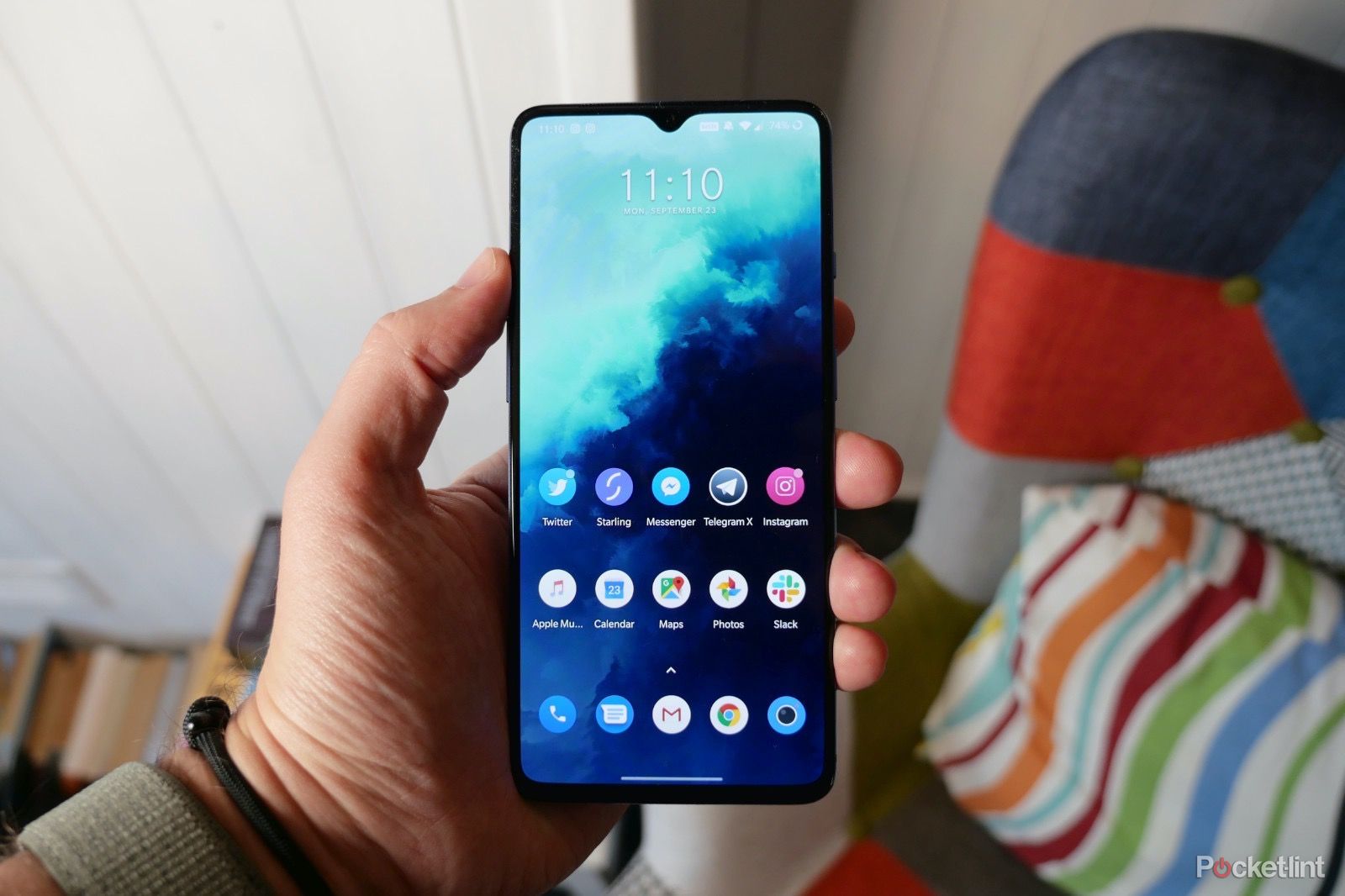We've become accustomed to OnePlus launching a new device twice a year. For the past few generations, the 'T' series has been that end-of-year upgrade to its flagship phone, usually offering a more powerful processor and one or two other improvements.
2019's upgrade came early. Perhaps too early. Considering how little time passed between the OnePlus 7 and OnePlus 7 Pro launch and the release of the 7T, it certainly seemed that way. But in this particularly instance, it ended up feeling like a welcome update. After all, the OnePlus 7 was barely different to the OnePlus 6T.
A quick look over the 7T's design, specs and cameras, and there's no way this would ever be mistaken for its predecessor. It's a bold look on a phone that makes bold claims about performance. Could this model, on balance, be the best OnePlus to buy?
OnePlus 7T - 128GB (Blue)
Our quick take
It might not have the sharper display of the 7T Pro, but we think the 7T is the best OnePlus phone on balance, regardless of cost. The big, flat and skinny-bezeled screen on the front is gorgeous, the battery lasts, the performance is speedy, and the cameras are fun to play with.
However, yet again in the cameras department we're left feeling it could be a bit better. For a phone that's supposed to punch above its weight and compete with the premium big-name phones, some of the inconsistencies and issues here are frustrating.
With that said, if you don't need the absolute best camera available then you will love the OnePlus 7T. Literally everything else about it is fantastic.
There aren't many phones out there that match the feel of speed and fluidity you get from a OnePlus phone. There also aren't many that strike that balance between clean and customisable software. And that's always been the joy of OnePlus' smartphones, which in the 7T is brought to the fore once more.
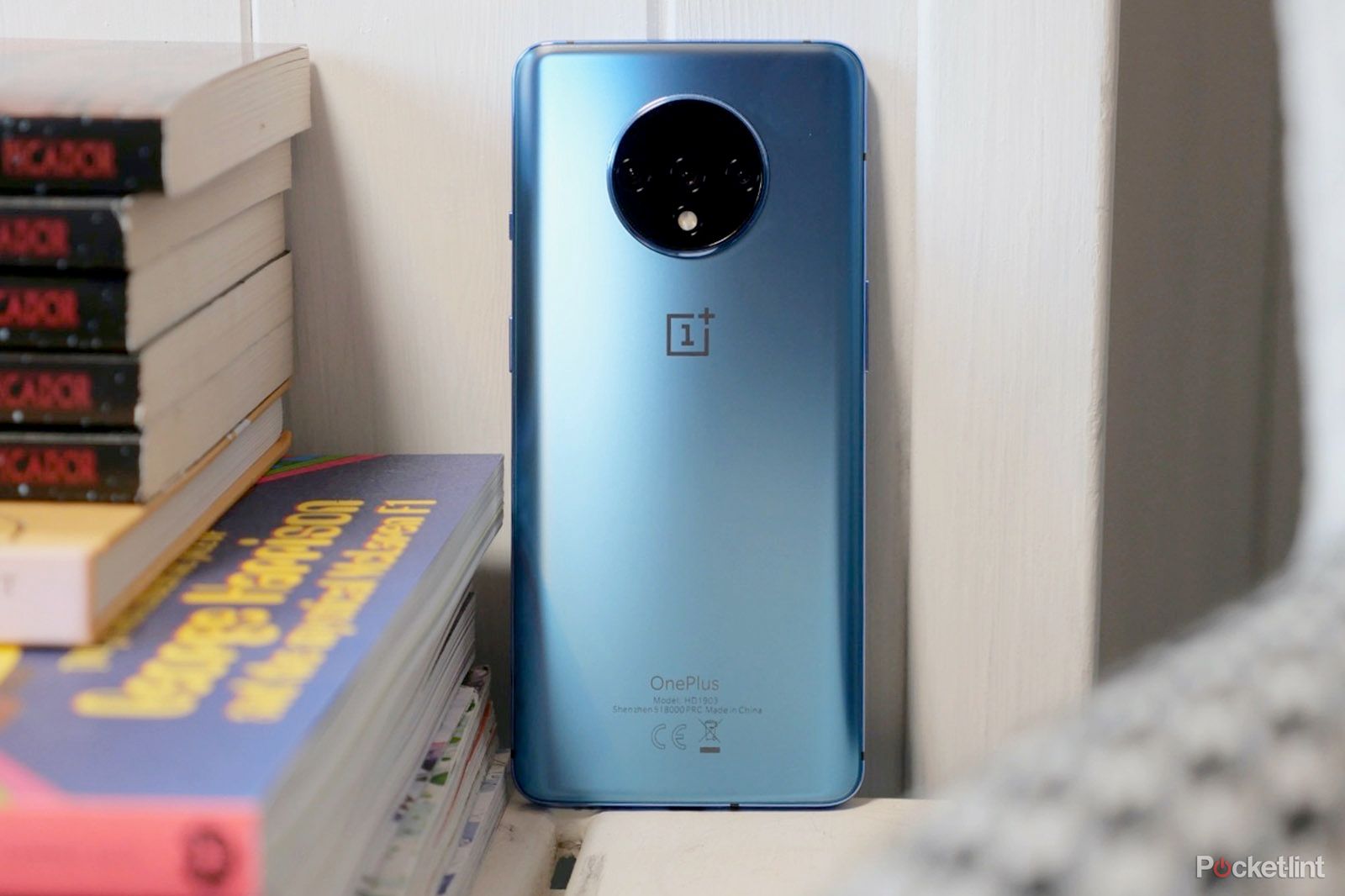
OnePlus 7T - 5.0 / 5
| FOR | AGAINST |
|---|---|
|
|
OnePlus 7T - 128GB (Blue)
Eye-catching looks
- Frosted Silver and Glacier Blue colours
- Dimensions: 160.9 x 74.4 x 8.1mm
- Weighs: 190 grams
- Curved glass back
Starting with the 7T's most obvious point: its back. In previous years, OnePlus has prided itself on the minimalist, symmetrical look of its rear panel. The cameras are usually placed vertically, in a small protrusion right in the middle of the phone. Those days are most definitely gone with the OnePlus 7T (or at least temporarily paused).
Until the Huawei Mate 30 launch, we hadn't seen a camera hump like this since the days of old school Nokia PureView.
That's to say, beauty is definitely in the eyes of the beholder. It's still symmetrical, sure, but it dominates the space. We're of the opinion that - just like Marmite - you'll either love it, or hate it. What you can't do, is ignore it.
What we really like about the 7T is the finish, texture and shape of the glass on the back. Our review model is the glacier blue, which is slightly lighter and cooler than the Nebula Blue from the 7 Pro. It's got that frosted look, which means it's not slippery and glossy. It's a similar texture to the latest iPhone 11 Pro series phones, offering a little more grip and more resistance against fingerprint smears.
The fact that it curves towards the edges, and that the phone is only 8mm thin, means it's certainly less bulky and feels a little lighter and better balanced in the palm than the 7 Pro does. Despite that, it's still larger than an iPhone 11 Pro Max or XS Max, so this OnePlus is obviously not a small device.
It's noticeably taller and more square than the 6T and 7. It still has rounded corners, but they're slightly tighter than the previous models, with the screen corners also having that same tighter appearance, giving it a more rectangular shape. And we like that, along with the visual impact offered by the longer aspect ratio display that dominates the available surface area.
You can see the 6T to 7T to 7 Pro evolution in our picture below, this review model being in the centre:
Other notable changes to the 7T include the removal of the drilled holes to the left of the USB Type-C port on the bottom edge. Instead, OnePlus has put the SIM tray there, just like on the 7 Pro. Other than that, it's all quite standard. There's the ever-useful alert slider that lets you switch between silent, vibrate and sound modes, plus the ever-present power button and volume rocker on the left side.
As usual, the one notable design exclusion is any official IP rating against water and dust resistance. But again, OnePlus doesn't play those games, much in the same way as Motorola has no official rating (yet does coat its phones' interiors with resistive material).
Fluid AMOLED display
- Flat 6.55-inch 20:9 aspect ratio AMOLED display
- HDR10+ with 1000 nit peak brightness
- 2,400 x 1080 resolution
- 90Hz refresh rate
- Teardrop notch
OnePlus 7 Pro was the first phone from the manufacturer to include a 90Hz display, and notably, the regular OnePlus 7 didn't have it. For the 'T' series, both phones went with the higher refresh rate. OnePlus 7T has the 90Hz panel designed for smoother animations and response times.
This panel isn't QuadHD like the 7T Pro, though, it's still a Full HD+ variant with a 20:9 aspect ratio, but it also supports HDR10+ for maximum brightness, colour gamut and contrast ratio, making it even better for watching your favourite Netflix shows on.
Despite not being a QuadHD resolution panel, it still offers a fantastic experience. Colours and contrast are top notch in Vivid mode, appearing more saturated and lively than the OLED panel on the iPhone XS Max.
In the display settings you can choose to have it in Natural mode, which reduces the saturation, or you can use the Advanced mode and choose the AMOLED Wide Gamut, sRGB or Display P3. There's also the option to adjust the colour temperature, so you really can get the panel looking the way you prefer if you're particularly fussy about these things.
One advantage to having this screen over the display on the Pro model is the fact that it's completely flat. There are no curved edges to distort the colours or image. What's more, there's less likelihood of accidental touch gestures activating or hindering an action on the phone.
As for that faster refresh rate display, it can be hard to tell in daily use how much smoother it makes animations in general. You have to look with quite a lot of focus, although side-by-side with a lesser phone and you'll see. Then again, OnePlus phones have always felt fast, as that's the company's MO.
Speed and longevity
- Snapdragon 855 Plus processor
- 8GB RAM + 128GB storage
- UFS 3.0 flash memory
- 3,800mAh battery
- 30W Warp Charge
OnePlus reason for having a T-series phone every year is to be sure that it's offering the fastest, smoothest performance it can bring in a smartphone, ensuring it's ahead of the pack. For 2019, that means equipping this phone with Qualcomm's flagship processor, the Snapdragon 855 Plus.
No OnePlus smartphone has ever been slow. In fact, you could still pick up one of the manufacturer's older models from the past 18-24 months and you'd likely be perfectly happy with the daily performance.
Its 'Never Settle' mantra is as much about making its experience smooth and quick as it is about pushing the boundaries of what you can expect to get for relatively little money. After all, OnePlus is still selling phones with flagship specs and premium build at a considerably lower price than its big-name rivals.
With the Plus version of the Snapdragon 855 chipset the OnePlus 7T just flies. Everything it does is fluid and snappy, and higher refresh rate screen means you might just notice it even more.
The area we noticed it most - as with the 7 Pro - is the so-called "jelly scrolling" where, when you scroll up and down really quickly, it doesn't quite catch up with your movement. With the 7T that problem is non existent. And because it has UFS 3.0 flash storage, it reads and writes data really quickly too. In short: it does everything fast.
Similarly, playing intense game titles is a smooth experience. You might see the odd frame drop once every now and then - as you might even with the most powerful gaming phone - but on the whole, it's a top performer. Animations in games are smooth and quick, and joined with that vibrant, bright display, make for a fantastic experience.
One of the benefits of having a physically larger phone is having more space inside for battery. In the 7T it's not as big a jump in capacity as its predecessor, but with a 3,800mAh cell it'll comfortably get you through the busiest of days.
Obviously, mileage varies for everyone depending on how much you're moving around, how many hours you spend with the screen on. With what we'd consider fairly light usage - maybe around and hour or two of screen time in a day - we were able to push well into a second day. Although not quite enough to get us to bed time.
On deliberately heavier use days, with an hour of social media browsing, lots of photo taking, an hour of gaming, lots of music listening, and even watching an hour-long episode on Netflix, we just about managed to push the battery down to 20 per cent. Therefore we think OnePlus has cracked battery longevity.
For those who like to keep an eye on screen time, around 90 minutes when playing a mobile game is enough to drop the battery down by about 25 per cent. That's with it set at around 60 per cent brightness. Timings differ depending on which app you're using and how bright the screen is. Still, it's a solid performer that should comfortably give you between five and six hours of screen time per full charge.
While you shouldn't ever feel battery anxiety with the OnePlus 7T, the updated Warp Charge technology means that you can top-up extra fast. The algorithms powering the 30W Warp Charge fast-charging technology have been improved to the point where you can get around 70 per cent of the battery full with just 30 mins plugged in at the wall.
It may not be as fast and impressive as its sister-company, Oppo's SuperVOOC or SuperVOOC 2.0 technology, but it's definitely fast enough, and works almost as quickly even when you're continuing to use the phone.
Zen and customisation
- Android 10 based Oxygen OS
- Zen Mode updated with more options
- Customisation screen refresh
Anyone who knows OnePlus well knows the software it loads on top of Google's Android operting system - named Oxygen OS - takes the minimal, clean look of pure Android and ramps up the speed and customisation options.
With the Android 10-based version on the 7T, that's been enhanced further. OnePlus has brought together all the customisation choices and put them in a neat little interface, and in doing so has also added a couple more customisation choices.
As well as being able to choose between light and dark mode, you can choose the accent colour, change your icons style (even download third-party icon packs), choose your lock screen clock style, and change the style of the quick settings tiles in the drop-down menu.
Apart from that, it's much the same as always, offering gestures for quickly launching popular actions, locking apps behind pin codes/fingerprint scan, and the RAM Boost feature which learns how you use your phone to prioritise the apps you need most frequently.
Zen mode returns too, allowing you to take breaks from screen time and notifications. This time around you can choose from a few different options for time settings, so you don't just get a 20 minute break option anymore. You can go up to an hour if you like, and you can even set schedules to remind you to activate it.
Versatile snapper
-
Triple camera system: Regular, ultra-wide and telephoto
- 48MP primary f/1.6
- 12MP telephoto f/2.2
- 16MP ultra-wide f/2.2
When the OnePlus 7 Pro launched earlier in 2019, OnePlus introduced a triple camera system, but left it out of the smaller OnePlus 7. It was understandable, but ultimately meant the 7 wasn't much of an improvement over the 6T. For the 7T, the manufacturer had something of a change of heart, and equipped the latest with three cameras, each with a different focal length.
For those interested, the three are an ultra-wide at 17mm equivalent, wide at 26mm equivalent, and the 2x zoom at 51mm equivalent. Unlike Apple's iPhone 11 Pro equivalent, they're not all the same sensor. The primary camera has the 48-megapixel Sony sensor (which combines four pixels into one to form a 12-megapixel image), the ultra-wide is a 16-megapixel sensor, and the zoom is 12-megapixel.
It's great having the versatility to switch between the three, and certainly does mean you have a variety of shots available to you, but the one thing we found was that because they're not all the same sensor type, you can often see a difference in colour, white balance and overall appearance between them, so it's not always consistent. For instance, you won't get the same low-light performance from the ultra-wide and telephoto lenses that you get from the primary camera.
Generally, in anything other than nice and bright light, it struggled to produce good results. We'd often see a little image noise, or the background blur was a bit unusually and artificial looking. It seems that, yet again, OnePlus has some work to do on its image processing.
There is a Super Macro mode which seems to work well. Using the ultra-wide angle lens, the Super Macro lets you get really close to an object to shoot it, and can focus on the small details where the primary and zoom lenses can't.
In this mode, you can still switch between the 0.6x, 1x and 2x zoom views within the camera app, but it uses the same camera for each one, zooming in digitally (or cropping) closer into the the image to bring you more detail up close. Unusually, the end result is still a 16MP picture.
You also get the regular portrait modes for background blur, on both front and back cameras, as well as the now-trendy night mode option which uses algorithms to determine how long to keep the shutter open and then stabilises any shaking to produce a sharp, bright image when there isn't a lot of light.
Or, at least, that's the theory. We found that as long as there was a source of light somewhere nearby, the images did indeed come out brighter. Often they would also have that tell-tale extra contrast and perhaps over-sharpening that you do get from these night modes.
If it's really dark and there's not a lot of light at all, it struggles. We compared with the iPhone 11, and not only did the OnePlus struggle to retain detail, it also produced a weird greenish tint, whereas the iPhone's results were much better balanced.
OnePlus 7T - 128GB (Blue)
To recap
It might not have the sharper display of the 7 Pro, but we think the 7T is the best OnePlus phone this year, regardless of cost. The big, flat and skinny-bezeled screen on the front is gorgeous, the battery lasts, the performance is speedy, and the cameras are fun to play with.

